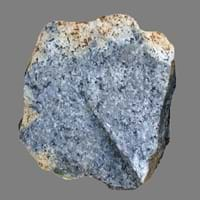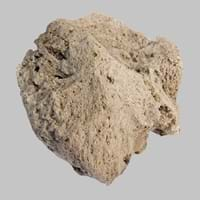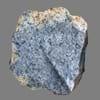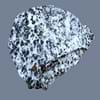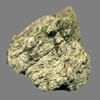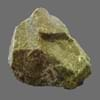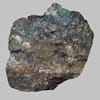Definition
Syenite is a coarse-grained igneous rock which is composed mainly of alkali feldspar and various ferromagnesian minerals
Pumice is a volcanic rock that consists of highly vesicular rough textured volcanic glass, which may or may not contain crystals
Discoverer
Unknown
Unknown
Etymology
From French syénite, from Latin Syenites (lapis ) (stone) of Syene
From Old French pomis, from a Latin dialect variant of pumex
Class
Igneous Rocks
Igneous Rocks
Sub-Class
Durable Rock, Medium Hardness Rock
Durable Rock, Medium Hardness Rock
Other Categories
Coarse Grained Rock, Fine Grained Rock, Medium Grained Rock, Opaque Rock
Fine Grained Rock, Opaque Rock
Color
Brown, Buff, Cream, Green, Grey, Pink, White
Beige, Colourless, Grey, Light Green, Light Grey, Pink, White, Yellow- grey
Durability
Durable
Durable
Scratch Resistant
Yes
Yes
Appearance
Banded and Foilated
Vesicular
Interior Uses
Flooring, Homes, Hotels, Interior Decoration
Decorative Aggregates, Flooring, Homes, Interior Decoration
Exterior Uses
As Building Stone, As Facing Stone, Paving Stone, Garden Decoration, Office Buildings
As Building Stone, As Facing Stone, Garden Decoration, Paving Stone
Other Architectural Uses
Curbing
Curbing, Powder
Construction Industry
As Dimension Stone, Cement Manufacture, Construction Aggregate, for Road Aggregate, Landscaping, Making natural cement, Manufacture of Magnesium and Dolomite Refractories
As Dimension Stone, Cement Manufacture, for Road Aggregate, In landscaping and horticulture, Making natural cement, Production of lightweight concrete blocks
Medical Industry
Not Yet Used
As an abrasive in skin exfoliating products, In Chemical and Pharmaceutical Industry, Medicines and Cosmetics
Antiquity Uses
Artifacts, Monuments, Sculpture, Small Figurines
Artifacts
Commercial Uses
Cemetery Markers, Creating Artwork
As a traction material on snow-covered roads, As an abrasive in pencil erasers, Fine abrasive used for polishing, Manufacture of Soap, Solvents, Dyes, Plastics and Fibres, Used in aquariums
Features
Available in Lots of Colors and Patterns, Is one of the oldest rock, Matrix variable
Host Rock for Lead
Archaeological Significance
Monuments
Used
Not Yet Used
Famous Monuments
Data Not Available
Not Applicable
Sculpture
Used
Not Yet Used
Famous Sculptures
Data Not Available
Not Applicable
Figurines
Used
Not Yet Used
Formation
Syenites are formed due to alkaline igneous activities and are generally formed in thick continental crustal areas or in Cordilleran subduction zones.
Pumice rock forms when the magma cools so quickly that atoms in the melt are not able to arrange themselves into a crystalline structure.
Mineral Content
Amphibole, Biotite, Feldspar, Hornblade, Micas, Muscovite or Illite, Plagioclase, Pyroxene, Quartz
Aluminum Oxides, Calcite, Carbonate, Iron Oxides, Silica
Compound Content
Aluminium Oxide, CaO, Iron(III) Oxide, FeO, Potassium Oxide, MgO, MnO, Sodium Oxide, Phosphorus Pentoxide, Silicon Dioxide, Titanium Dioxide
Al, Aluminium Oxide, CaO, Carbon Dioxide, MgO, Silicon Dioxide
Types of Metamorphism
Burial Metamorphism, Cataclastic Metamorphism, Contact Metamorphism, Hydrothermal Metamorphism, Impact Metamorphism, Regional Metamorphism
Burial Metamorphism, Impact Metamorphism
Types of Weathering
Biological Weathering, Chemical Weathering, Mechanical Weathering
Biological Weathering, Chemical Weathering, Mechanical Weathering
Types of Erosion
Chemical Erosion, Coastal Erosion, Glacier Erosion, Sea Erosion, Water Erosion, Wind Erosion
Chemical Erosion, Coastal Erosion, Glacier Erosion, Sea Erosion, Water Erosion, Wind Erosion
Grain Size
Medium to Fine Coarse Grained
Fine Grained
Fracture
Not Available
Planar
Streak
White
White, Greenish White or Grey
Porosity
Less Porous
Highly Porous
Luster
Subvitreous to Dull
Earthy
Toughness
Not Available
3
Specific Gravity
2.6-2.7
2.86
Transparency
Opaque
Opaque
Density
2.6-2.8 g/cm3
0.25-0.3 g/cm3
Resistance
Heat Resistant, Impact Resistant, Wear Resistant
Impact Resistant, Pressure Resistant
Deposits in Eastern Continents
Asia
China, India, Iran, Saudi Arabia, Sri Lanka, Taiwan, Thailand, Turkey, Vietnam
Afghanistan, Indonesia, Japan, Russia
Africa
Angola, Egypt, Madagascar, Namibia, Nigeria, South Africa
Ethiopia, Kenya, Tanzania
Europe
Bulgaria, England, Germany, Norway, Romania, Switzerland
Greece, Hungary, Iceland, Italy, Turkey
Others
Not Yet Found
Not Yet Found
Deposits in Western Continents
North America
USA
Bahamas, Barbados, Canada, Costa Rica, Cuba, Jamaica, Mexico, USA
South America
Brazil, Chile
Argentina, Chile, Ecuador, Peru
Deposits in Oceania Continent
Australia
New Zealand, Queensland, South Australia, Western Australia
New Zealand, Western Australia
All about Syenite and Pumice Properties
Know all about Syenite and Pumice properties here. All properties of rocks are important as they define the type of rock and its application. Syenite and Pumice belong to Igneous Rocks.Texture of Syenite is Earthy whereas that of Pumice is Vesicular. Syenite appears Banded and Foilated and Pumice appears Vesicular. The luster of Syenite is subvitreous to dull while that of Pumice is earthy. Syenite is available in brown, buff, cream, green, grey, pink, white colors whereas Pumice is available in beige, colourless, grey, light green, light grey, pink, white, yellow- grey colors. The commercial uses of Syenite are cemetery markers, creating artwork and that of Pumice are as a traction material on snow-covered roads, as an abrasive in pencil erasers, fine abrasive used for polishing, manufacture of soap, solvents, dyes, plastics and fibres, used in aquariums.
